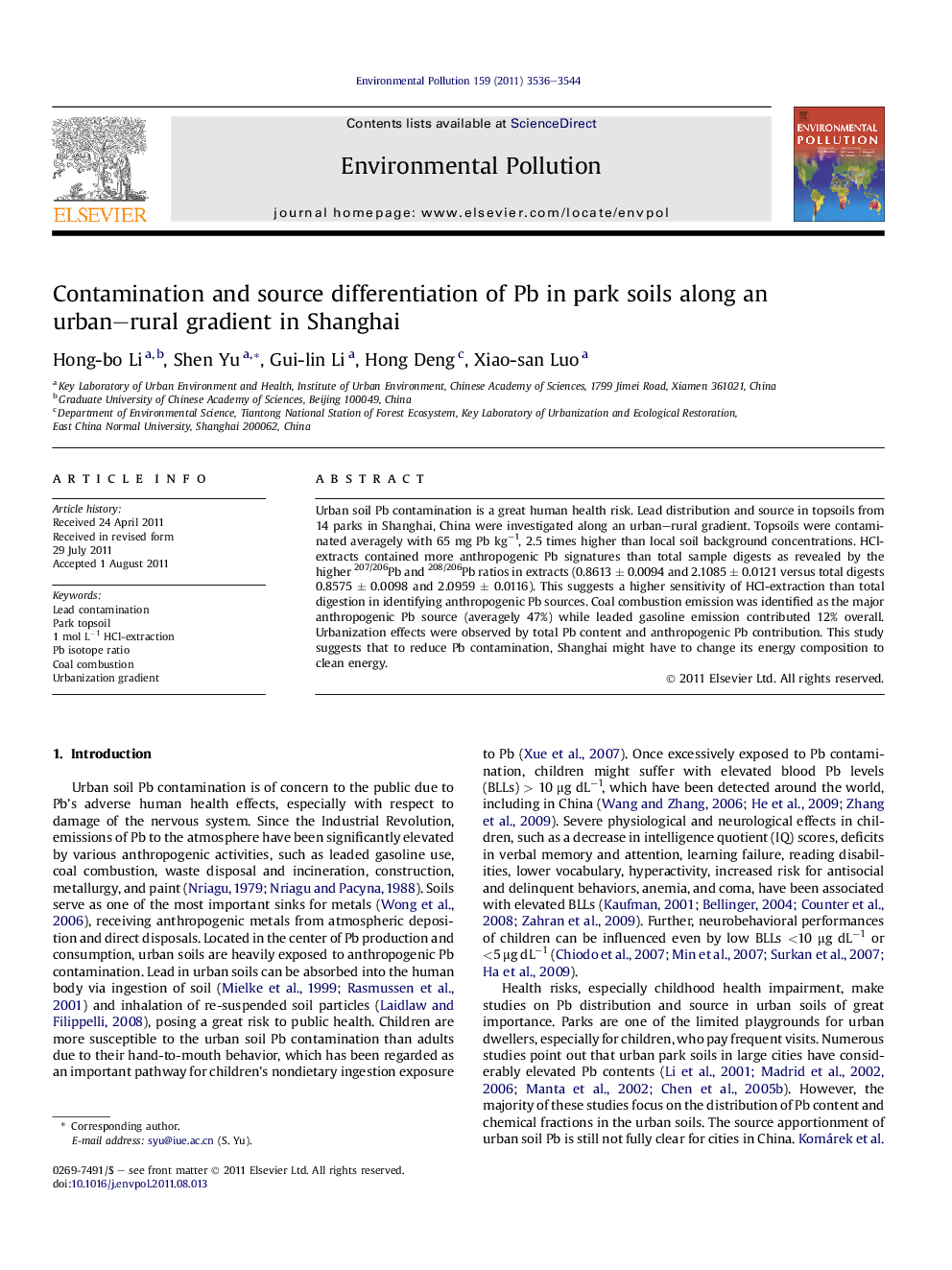| Article ID | Journal | Published Year | Pages | File Type |
|---|---|---|---|---|
| 4425256 | Environmental Pollution | 2011 | 9 Pages |
Urban soil Pb contamination is a great human health risk. Lead distribution and source in topsoils from 14 parks in Shanghai, China were investigated along an urban–rural gradient. Topsoils were contaminated averagely with 65 mg Pb kg−1, 2.5 times higher than local soil background concentrations. HCl-extracts contained more anthropogenic Pb signatures than total sample digests as revealed by the higher 207/206Pb and 208/206Pb ratios in extracts (0.8613 ± 0.0094 and 2.1085 ± 0.0121 versus total digests 0.8575 ± 0.0098 and 2.0959 ± 0.0116). This suggests a higher sensitivity of HCl-extraction than total digestion in identifying anthropogenic Pb sources. Coal combustion emission was identified as the major anthropogenic Pb source (averagely 47%) while leaded gasoline emission contributed 12% overall. Urbanization effects were observed by total Pb content and anthropogenic Pb contribution. This study suggests that to reduce Pb contamination, Shanghai might have to change its energy composition to clean energy.
► Coal combustion emission is identified as a main Pb source in Shanghai park soils. ► HCl-extraction is sensitive in identifying anthropogenic isotope Pb sources. ► Soil Pb contamination and its anthropogenic sources showed urbanization effects.
